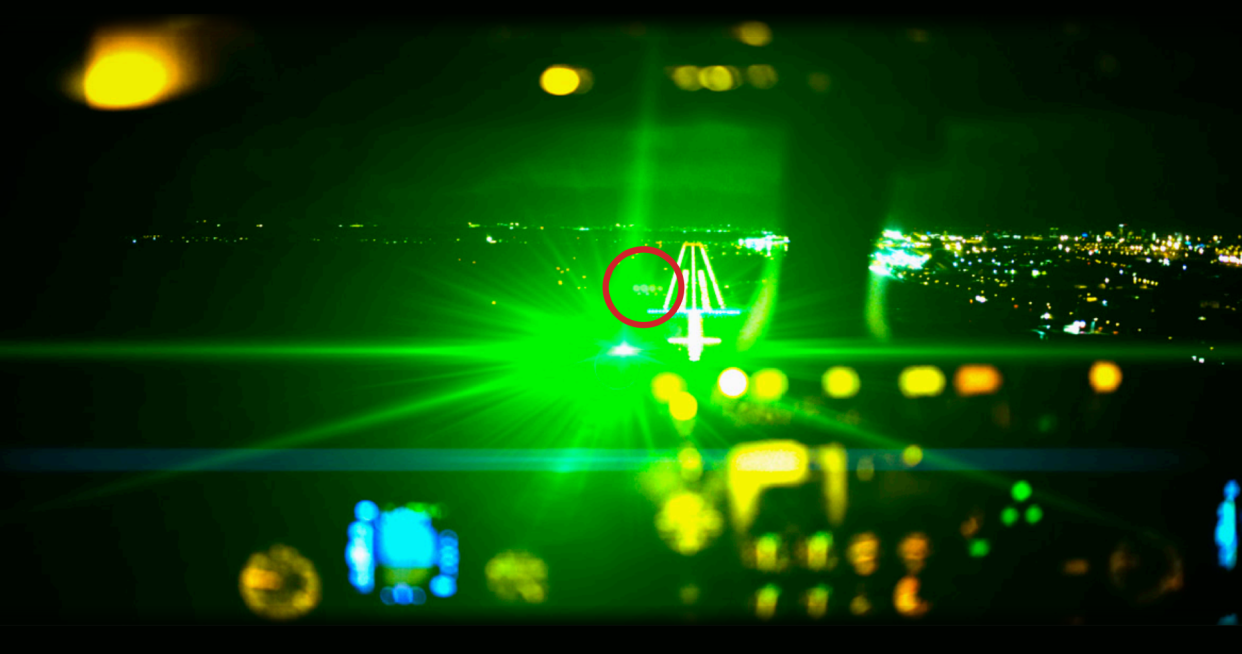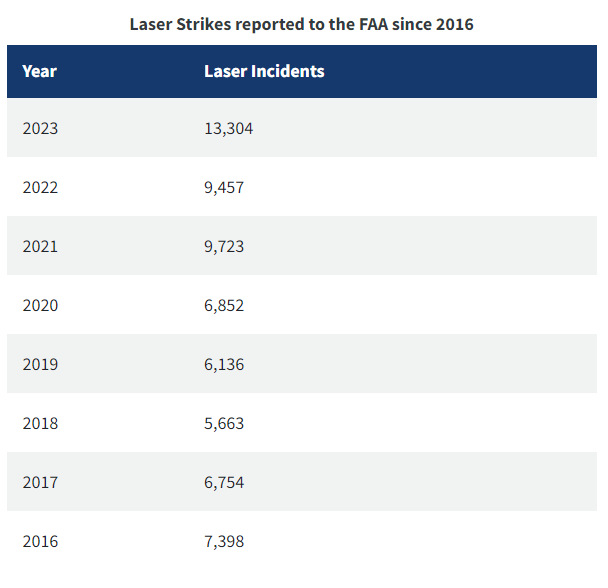Lubbock man sentenced to a year in federal prison for aiming laser at DPS helicopter

A spike in laser strikes against aircraft has Federal Aviation Administration officials ramping up efforts to educate the public about the dangers and legal consequences of interfering with aircraft using high-powered laser emitters.
According to the FAA, 2023 had the highest number of laser strikes reported since 2006.
More than 13,300 cases of laser strikes were reported by pilots last year - a 40 percent increase from the year before.
A total of 15 cases were reported in Lubbock last year.
One of those cases involved a 33-year-old Lubbock man who sentenced April 4 to a year and a day in federal prison for shining a high-powered laser multiple times at a Texas Department of Public Safety helicopter patrolling the city.
Joshua Wayne Pyle, who was out on bond, appeared before U.S. District Judge James Wesley Hendrix for an sentencing hearing after he pleaded guilty in September to a federal felony count of aiming a laser pointer at an aircraft, a federal felony that carries a punishment of up to five years in prison.
Hendrix sentenced him to 12 months and one day in prison. The extra day would allow Pyle to earn good time credit while in prison for a possibility of early release.
Pyle was allowed to remain out on bond and report to the Bureau of Prisons by May 16.

Court records state a DPS helicopter pilot was patrolling the area of 82nd Street and Slide Road late in the night of Aug. 16 when the beam of a green laser struck it, causing the pilot to divert from its flight path to avoid eye damage.
Meanwhile, the flight crew began to search for the source of the laser beam.
A Lubbock police report states patrol officers heard multiple calls about a person in the area of 19th and Milwaukee Avenue shining a laser beam at aircraft. Jail records show Pyle's address is in the same area. FAA records show that there was one more report of an aircraft being struck by a Green laser beam that night. However, Pyle is not charged in that incident.
Just after midnight, the helicopter was struck again several times by a green laser beam, causing the pilot to shut off his night vision device to avoid eye damage since the instrument amplifies light.
"Based on my previous history while in the U.S. Army, I know that if a bright light shines into the lenses of (night vision devices) it can cause a "white out" and the user can lose all visibility and at bare minimum night sight for a few minutes," an officer wrote in the police report.
The pilot also diverted his flight path to avoid the beam. This time, however, the pilot saw the laser operator standing by a pickup truck outside an apartment complex near the intersection of 49th Street and Joliet Avenue.
The pilot saw the laser beam operator get in the passenger side of the truck, which drove away.
The pilot followed the truck and relayed information to Lubbock police officers who caught up to the truck in the 4000 block of 50th Street.
During the traffic stop, officers encountered the passenger of the truck, identified as Pyle, who appeared nervous, sweating profusely and breathing hard.
Pyle denied shining a laser pointer at the helicopter. However, officers found a laser pointer in his front shirt pocket.
"The officer pressed the button on the side and the laser pointer emitted a green laser, which was consistent with the color of the laser that struck the DPS helicopter," court records state.
In Pyle's case, pilot and crew were uninjured, DPS spokesman Sgt. Johnny Bures said.
"We would like to remind folks that pointing a laser at an aircraft is a federal crime," he said. "U.S. law enforcement agencies and the Federal Aviation Administration may seek criminal and civil prosecution against violators. People who shine lasers at aircraft face FAA fines of up to $11,000 per violation and up to $30,800 for multiple laser incidents."
Court records do not indicate that Pyle was assessed a fine in his case.
Court records show that Pyle was initially arrested and charged with a state Class A misdemeanor charge of illuminating an aircraft with a laser pointer with intent to impair the pilot. Class A misdemeanors carry a punishment of up to a year in jail.
However, the offense is also a federal felony.
FAA officials cited several factors in the rise of laser strike reports including the availability of inexpensive laser devices, which are sold in abundance in physical and online stores, stronger power levels that enable lasers to hit aircraft at higher altitudes and greater awareness by pilots to report laser incidents, the release states.
"Shining a laser at an aircraft is a serious safety threat," states a January FAA news release that reported the 2023 laser strike numbers. "Many types of high-powered lasers can incapacitate pilots, many of whom are flying airplanes with hundreds of passengers. Pilots have reported 313 injuries since the FAA began recording data on laser strikes in 2010."
This article originally appeared on Lubbock Avalanche-Journal: Lubbock man sentenced for aiming laser at DPS helicopter

